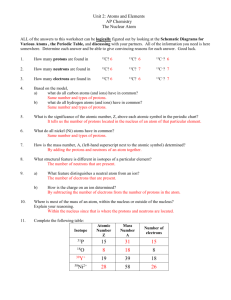
#Periodic table chemistry lab simulation full#
You may need to use your knowledge about element classes as well to get the full overview.Īt the end of the simulation, a special visitor will be coming by the lab, and she needs you to help her understand the atomic properties and trends of the periodic table. View Chemistry Lab Periodic Trends Computer Activity Answers.pdf from CHEM 1211 at Gwinnett Technical College.

You will move on to the virtual holotable, where you will investigate these trends and deduct how they behave when you move within and between periods and groups of the table.
#Periodic table chemistry lab simulation code#
You can view the source code for this simulation on our Github. There are currently ten questions in the game. Pay attention to the specific constraints required for each question. There are surprisingly many atomic properties for which trends can be observed via the periodic table. Play the Periodic Table Game to explore ionic bonding in a fun, interactive format. for grades 8-12) Full Module: The stand-alone activity 'Modeling the Periodic Table: An Interactive Simulation' is accompanied by a Teachers Guide (pdf) with background, lesson procedures, and. Cosmic Chemistry: Understanding Elements (recommended for grades 5-9). To place the elements back in the table you need to observe their atomic properties and discover the main trends of the groups and periods. Modeling the Periodic Table: Interactive Simulation: Teachers Guide.

The periodic table is an amazing tool for getting an overview of all the elements in existence, even the elements that only exist when we create them ourselves. Some of the elements have fallen out of the table wall, and it’s your mission to figure out where they belong by investigating their characteristics and properties. Draw a picture to support a written definition of the word radius. You will be asked to interact with select atoms as you investigate these concepts. In this investigation you will examine several periodic trends, including atomic radius, ionization energy and ionic radius.

FLASH FREEBIE UNTIL AUGUST 4 Students, in small groups, arrange and rearrange the puzzle pieces to show the connections between the terms on the puzzle pieces. One needs your help in order to fix it before time runs out. Simulation: Periodic Trends - Answer Key. This Periodic Table of Elements hexagonal thinking puzzle gets students talking about the connections between the different concepts from the Periodic Table of Elements unit in Chemistry. Atoms that no more needed can be returned to the periodic table. Electrons far from the atomic nucleus may easily fall off, or electrons from outside may enter. The periodic table in this virtual lab is broken and Dr. Ion Atoms are made up of an atomic nucleus and electrons. Some trends never go out of style! In this simulation, you will learn the fundamentals of the periodic table and explore some of the main trends in atomic properties among the main groups and periods. Some trends never go out of style In this simulation, you will learn the fundamentals of the periodic table and explore some of the main trends in atomic properties among the main groups and periods. This short, targeted simulation is adapted from the full-length “Periodic Table of Elements: Get the table organized in time!” simulation.


 0 kommentar(er)
0 kommentar(er)
